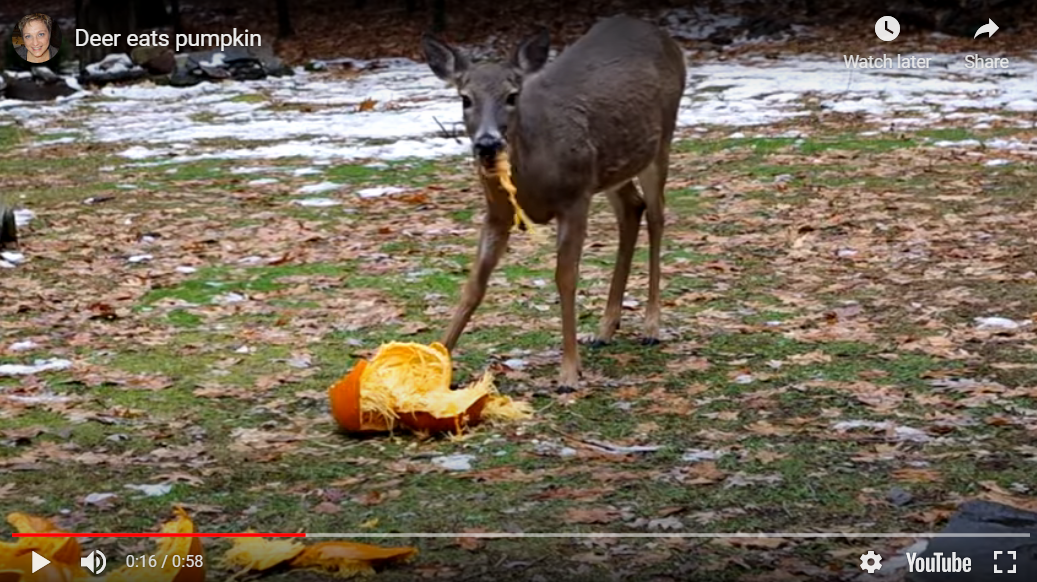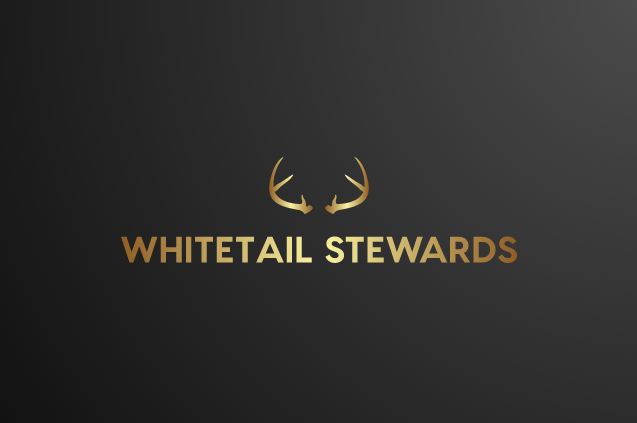Do Deer Like To Eat Pumpkins?
If you're a lover of pumpkins, you may have wondered if deer share your enthusiasm. Well, the answer is yes! Deer actually love to eat pumpkins, from the leaves and flowers to even the seeds and guts. [Source]
In fact, pumpkins provide several essential nutrients for these majestic creatures. So, if you have extra pumpkins lying around after Halloween, why not consider leaving them out for the deer to enjoy? There is nothing wrong with feeding your carved pumpkins to the local deer herd.
In this blog post, we'll explore the fascinating relationship between deer and pumpkins, and provide some tips on how to make the most of this delicious treat for our furry friends.
Can Deer Eat Pumpkins?
Deer have a varied diet, consisting primarily of plants such as grass, leaves, and shrubs. While they are primarily herbivores, deer do like to eat pumpkins if given the opportunity. Pumpkins are a rich source of vitamins, minerals, and fiber, making them a nutritious food for deer.
However, whether or not a deer will eat a pumpkin depends on several factors, including the availability of other food sources, the time of year, and the individual deer's preferences. It is important to note that while deer may eat pumpkins, they may also cause damage to pumpkin patches by trampling or eating the entire pumpkin. If you want to protect your pumpkins from deer, there are several strategies you can employ, such as using fencing, repellents, or scare tactics.

Nutritional value of pumpkins for deer
Pumpkins can actually provide some nutritional value for deer. They are relatively high in fiber and carbohydrates, which can provide an energy boost for deer, especially during the winter months when other food sources may be scarce. Pumpkins also contain vitamins A and C, as well as minerals like potassium and magnesium, which contribute to overall deer health. However, it's important to note that pumpkins should not be the sole food source for deer, as they still require a balanced diet of natural forage. Additionally, feeding pumpkins to deer should be done in moderation, as overconsumption can lead to digestive issues. It's best to consult with wildlife management experts for guidance on providing supplemental food for deer.
Factors influencing deer's attraction to pumpkins
There are several factors that can influence a deer's attraction to pumpkins. Here are some key factors to consider:
Smell: Deer have a keen sense of smell, and they are attracted to the sweet aroma of pumpkins. The scent of ripe pumpkins can be especially enticing to deer.
Taste: Pumpkins are high in sugar content, which makes them appealing to deer. The sweet taste of pumpkins can be a natural and nutritious treat for these animals.
Texture: The soft and juicy texture of pumpkins can be enjoyable for deer to consume. They can easily bite into the flesh and derive nourishment from the pulp.
Availability: Pumpkins are often available during the fall season when deer are actively seeking high-calorie foods to prepare for the winter. The abundance of pumpkins during this time can make them an attractive food source for deer.
Competition: If other food sources are limited or scarce, deer may be more inclined to feed on pumpkins as an alternative food option. This can be especially true in areas where natural forage is limited.
It's important to note that while deer may be attracted to pumpkins, their primary diet consists of browse, grass, and forbs. Pumpkins should not be relied upon as the sole food source for deer, but rather as a supplemental treat that can provide nutritional benefits.
Time of year and feeding patterns
The time of year and feeding patterns greatly influence whether deer will eat pumpkins. Deer are more likely to consume pumpkins in the fall and winter seasons when their natural food sources become scarce. During this time, deer seek out high-energy foods to help sustain them through the colder months. Pumpkins, with their high water content and carbohydrate-rich flesh, can provide a valuable food source for deer in these times. Additionally, deer tend to be more attracted to pumpkins that have been cut open, as the scent and accessibility make them more enticing. It's important to note that pumpkin consumption may vary based on the local deer population and their specific feeding habits.
Here are some key points about time of year and feeding patterns for deer and pumpkins:
- Fall and winter are the peak seasons for deer to eat pumpkins due to limited food availability.
- Deer seek out high-energy foods during these seasons to sustain themselves.
- Pumpkins with cut openings are more appealing to deer due to the scent and accessibility.
- Local deer populations and their feeding habits may influence whether deer eat pumpkins.
How To Protect Your Pumpkin Patch From Deer Damage
When it comes to pumpkin patches, deer can sometimes be a cause for concern. These creatures have a voracious appetite and can easily damage pumpkin plants if given the chance. While deer typically prefer to feed on trees, shrubs, and grasses, they may still be tempted by the tasty treats offered by pumpkin patches. The potential damage caused by deer includes eating the leaves, stems, and fruits of the pumpkins, which can significantly impact the growth and yield of the plants. To protect pumpkin patches from deer, there are a few strategies you can employ, such as installing fences, using scare tactics like noise makers or motion-activated sprinklers, or using natural deterrents like deer-resistant plants or repellent sprays. With the right precautions, you can ensure that your pumpkin patch remains intact and bountiful.
Ways To Protect Pumpkins From Deer
If you're a pumpkin enthusiast and want to protect your precious pumpkins from hungry deer, there are several effective methods you can employ:
Fence the area: Erecting a sturdy fence around your pumpkin patch is one of the most reliable ways to keep deer out. Ensure that the fence is at least eight feet tall to prevent them from jumping over.
Use scare devices: Set up scarecrow-like figures or motion-activated sprinklers to startle deer and deter them from approaching your pumpkins.
Deploy repellents: Applying commercial or homemade deer repellents can make your pumpkins less appealing to deer. These repellents often have a strong scent or taste that discourages deer from feeding on them.
Try noise deterrents: Hang wind chimes or use noise-making devices in your garden to create unexpected sounds that can startle deer and discourage them from approaching.
Utilize visual deterrents: Hang reflective or shiny objects such as aluminum foil, old CDs, or pinwheels in your pumpkin patch. The movement and reflections can confuse and deter the deer.
Plant deer-resistant plants: Surround your pumpkin patch with plants that deer find unappealing, such as marigolds, lavender, or rosemary. This may help create a natural barrier that deters them from getting closer to your pumpkins.
Remember, it's crucial to combine multiple methods to increase their effectiveness. Additionally, planting pumpkins in a less accessible area or growing them in elevated containers can further protect them from deer damage.
